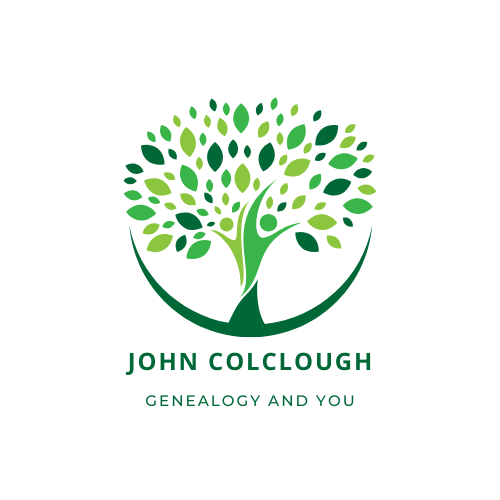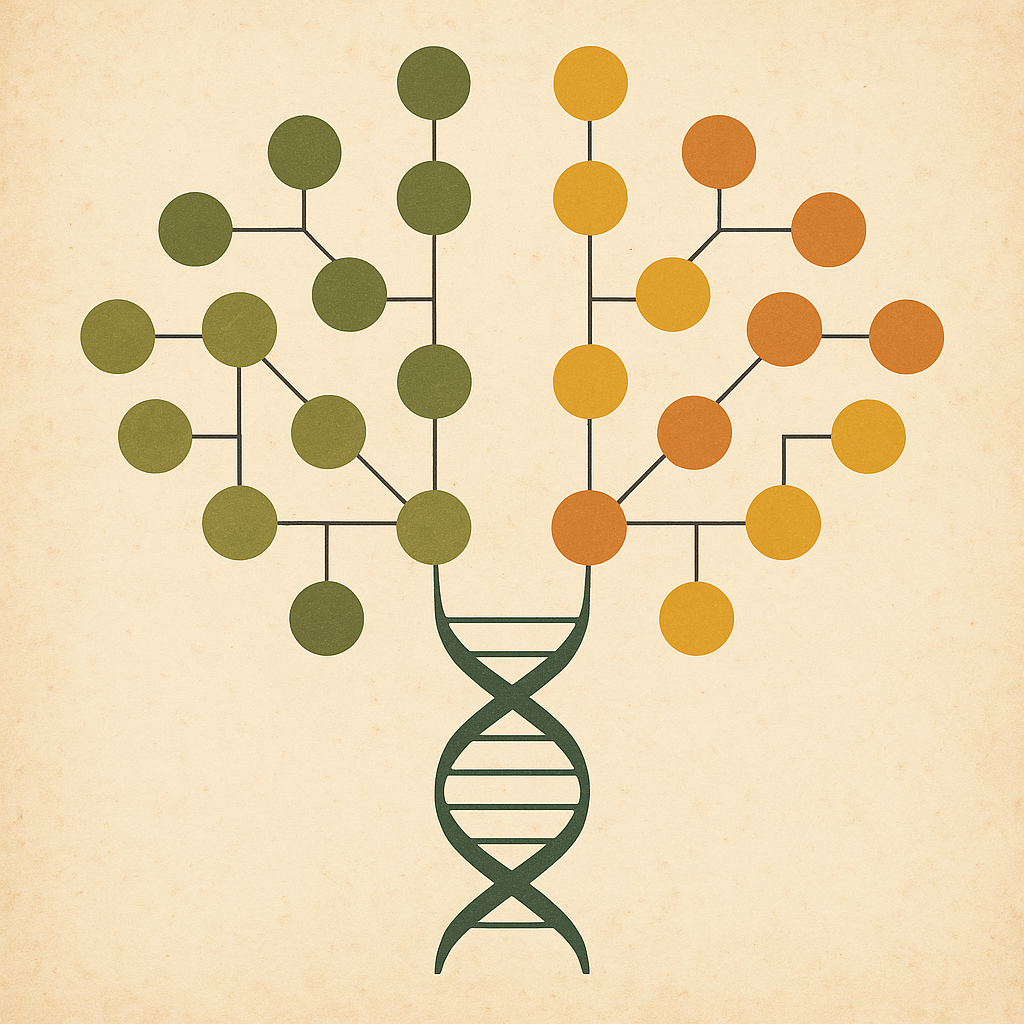In my exploration of genetic genealogy, I recently used the AutoCluster tool from GEDmatch, this time with the non-endogamous setting. This approach allowed me to focus on genuine, mid-range matches that often reflect recent, traceable ancestry — and the results revealed how certain relatives cluster through shared DNA, while others stand intriguingly apart.
🧩 What’s a DNA Cluster, Anyway?
Think of a DNA cluster like a table of cousins at a family reunion — they may not all know each other, but they’re connected through you. In genetic genealogy, a cluster is a group of people who all share DNA with each other, suggesting that they descend from the same part of your family tree. Clustering helps genealogists spot patterns that can reveal common ancestry — even when documents are sparse or missing.
🧬 What Is GEDmatch?
GEDmatch is a free, third-party website used by genetic researchers and family historians to compare DNA across multiple testing platforms. It doesn’t offer testing itself — instead, users upload their raw DNA data from testing companies like AncestryDNA or FamilyTreeDNA (FTDNA) to access powerful analysis tools.
Think of GEDmatch as a DNA meeting ground: by uploading your kit, you can use tools like AutoCluster to group your matches, look for triangulation, and identify shared ancestors from multiple sites in one place.
In this post, I’ve used GEDmatch’s Tier 1 AutoCluster tool (non-endogamous setting) to explore how matches cluster — and what that reveals about my family tree.
🛠️ Thinking About Trying GEDmatch?
Curious about GEDmatch? Here’s a brief overview of how people typically explore it — entirely at their own discretion.
Typical Steps to Use GEDmatch:
- Download your raw DNA file from your testing provider (e.g. AncestryDNA or FamilyTreeDNA)
- Create a free GEDmatch account
- Upload your raw file and assign a non-identifying alias
- Review and adjust your privacy and visibility settings
- Explore free tools or subscribe to Tier 1 for advanced features like AutoCluster
⚠️ Note: I’m sharing this strictly for informational purposes. I don’t endorse GEDmatch, and anyone considering it should read their Privacy Policy and make an informed decision.
📂 Cluster 1: One Shared Story Across Six Matches
My first AutoCluster analysis centred around Match B, who shares 49.8 cM across five segments with me. She appeared in a six-person cluster — matches A through F — each sharing between 31.3 and 55.3 cM with me. The shared segments also span five chromosomes.
| Match | Shared cM | Notes |
| A | 55.3 | Possibly from a maternal ancestral line |
| B | 49.8 | Anchor match, multiple shared segments |
| C | 33.5 | May connect through known historical region |
| D | 34.1 | Weak surname overlap from Irish records |
| E | 33.2 | Triangulates with Match A on two segments |
| F | 31.3 | Could represent an earlier generation |
Together, this group likely reflects descendants of a shared ancestral couple, forming a well-defined genetic cluster.
🧭 Second Look: Repeating Patterns and Isolated Matches
A second AutoCluster run, based on Match A (another 55.3 cM match), generated the same Cluster 1 — reinforcing the pattern.
But I also saw three singleton matches, each forming their own cluster — they didn’t match others in the group. Here’s what stood out:
| Match | Shared cM | Notes |
| G | 41.7 | Likely from the paternal side, but no triangulation |
| H | 31.8 | Possibly tied to a regional branch in western Ireland |
| I | 181.5 | Close relation — possibly a 1st cousin once removed |
These singletons are fascinating. Match I, in particular, likely represents a close family member — but doesn’t yet link to the same branch as the others. Further investigation is underway.
💭 Reflections: Patterns and Outliers
AutoClustering helped highlight both what’s familiar and what’s waiting to be explored.
The recurring six-person cluster feels secure — suggesting one maternal line preserved through multiple generations. Meanwhile, the singleton matches are tantalising: isolated signals that may lead to other branches entirely, including maternal lines, unknown ancestors, or regional migrations.
“Clusters are like a family gathering — and the ones who don’t show up at the table? They might hold the most surprising stories.”
I plan to dig further into segment data, surnames, and parish registers to see where these outliers connect — because in this work, even the smallest DNA thread might lead to a legacy waiting to be found.


Leave a Reply